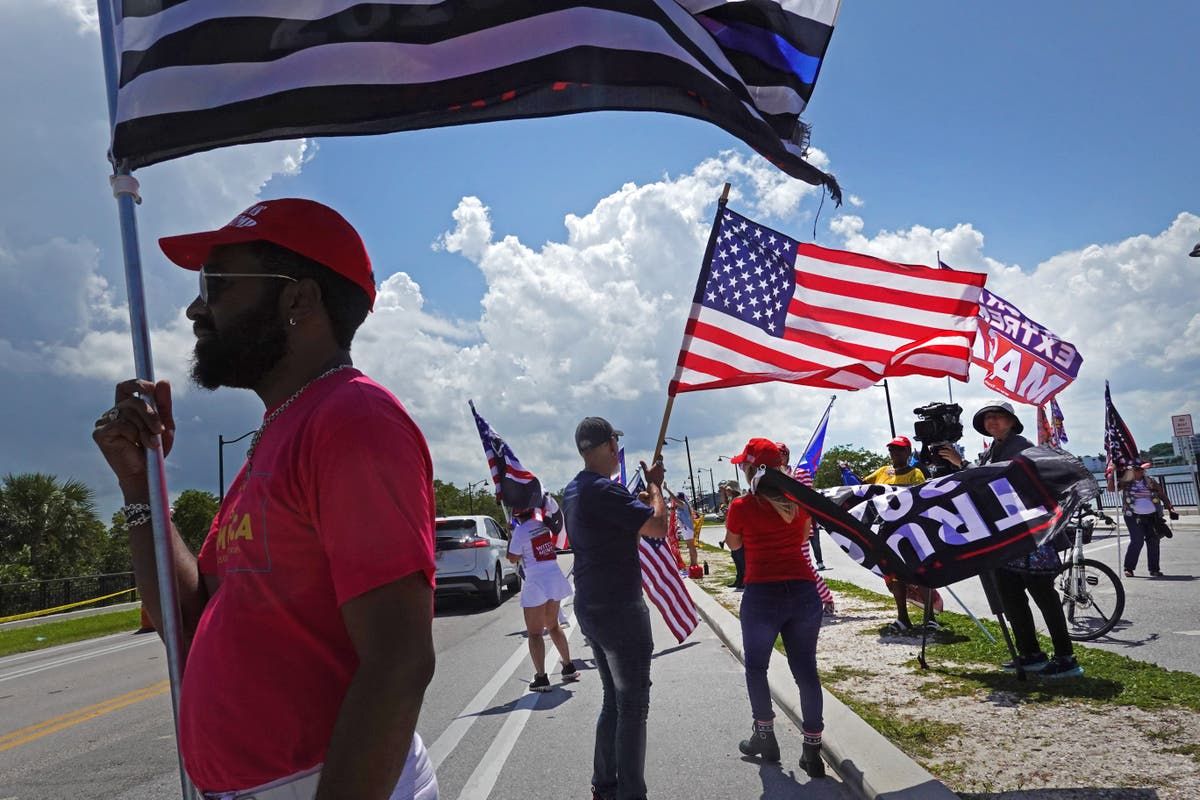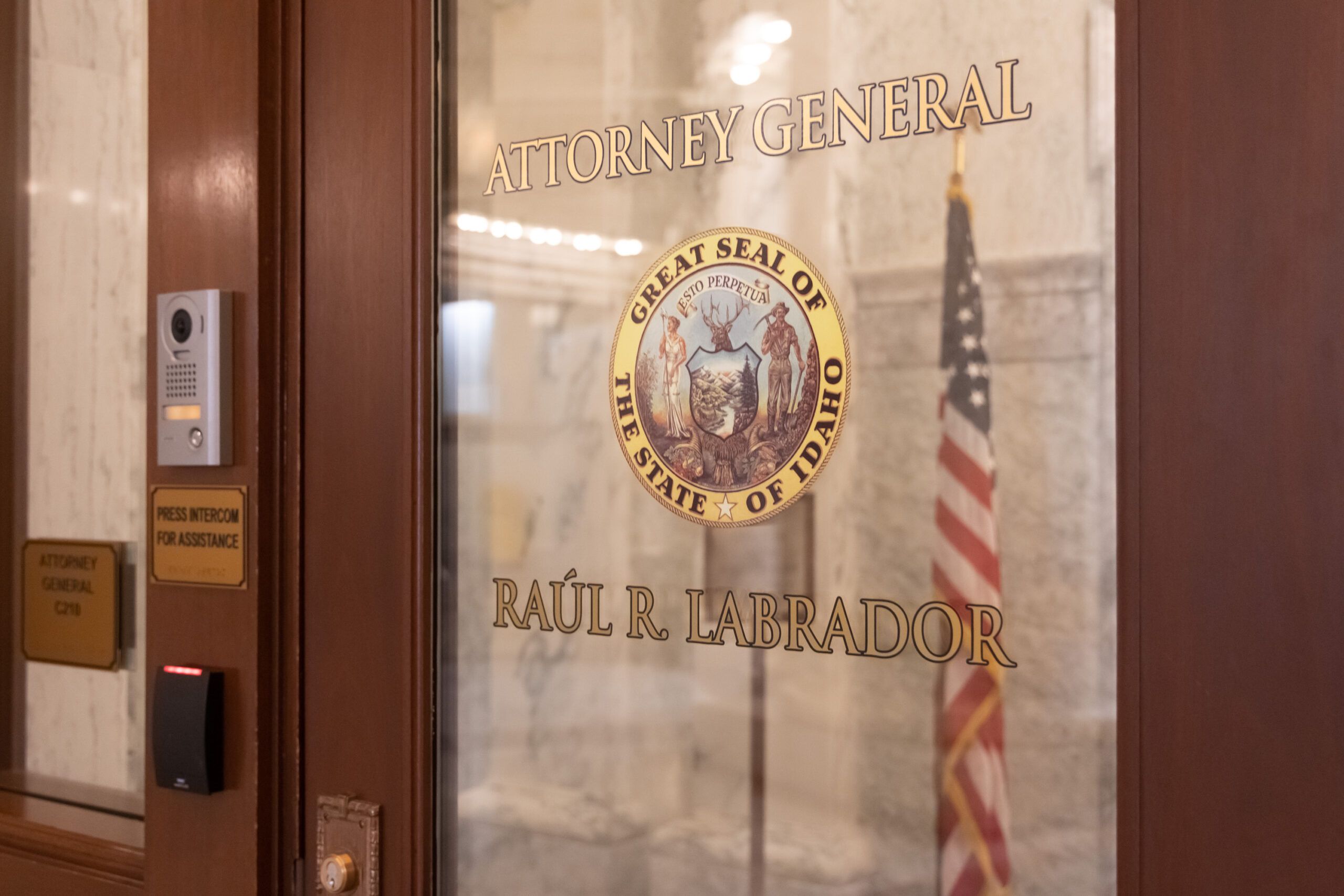Police monitoring online far-right threats and pro-Trump protests with federal indictment
Sign up for the daily Inside Washington email for exclusive US coverage and analysis sent to your inbox Get our free Inside Washington email Please enter a valid email address Please enter a valid email address SIGN UP I would like to be emailed about offers, events and updates from The Independent. Read our privacy notice Thanks for signing up to the
Inside Washington email {{ #verifyErrors }} {{ message }} {{ /verifyErrors }} {{ ^verifyErrors }} Something went wrong. Please try again later {{ /verifyErrors }}
Law enforcement agencies and extremism researchers are closely monitoring online threats and escalating rhetoric surrounding Donald Trump’s arraignment as the former president formally faces federal criminal charges in a sweeping indictment connected to his possession of classified documents at his Mar-a-Lago property.
Mr Trump continues to deny wrongdoing, casting the multiple investigations and lawsuits involving him, his campaign or business empire as a hoax, a fraud or a politically motivated hit job against him or his agenda, while using apocalyptic rhetoric and furious social media posts to draw support to his 2024 campaign fund and legal efforts.
On Truth Social, the former president sent a barrage of posts and videos declaring his innocence and urging his followers to face his political enemies. On 9 June, he wrote: “SEE YOU IN MIAMI ON TUESDAY!!!”
“Our country has to protest,” he said on The Roger Stone Show on 11 June.
He also shared a meme with a caption reading “THIS IS NOT A GAME, THIS IS WAR.”
On pro-Trump message board Patriots.win, formerly The Donald, a site that was central to organising riots on January 6, supporters have declared “war”, said protests could make “Waco look like a tea party,” and said that “this is what the Second Amendment was made for.”
“I used to laugh when my mom said that she was afraid if she registered Republican she may be arrested one day. I’m not laughing any more,” one user wrote. “Just buying more ammo.”
Speaking at a Republican event in Georgia on 9 June, failed Republican candidate for Arizona governor Kari Lake suggested that armed Americans would stop Mr Trump’s prosecution.
“If you want to get to President Trump, you’re going to have to go through me and 75 million Americans just like me,” she said. “And I’m going to tell you, most of us are card-carrying members of the NRA … That’s not a threat, that’s a public service announcement.”
Department of Homeland Security police place tape off an area in front of the Wilkie D Ferguson Jr federal courthouse in Miami on 12 June (Getty Images)
Republican US Rep Andy Biggs of Arizona said on his congressional Twitter account that “we have now reached a war phase.”
“Eye for an eye,” he said.
His office later said that his comment was a call for congressional Republicans to use their “procedural tools” to counter “the Left’s weaponization of our federal law enforcement apparatus.”
Republican US Rep Clay Higgins of Louisiana also posted a cryptic message on Twitter, suggesting that people should prepare for civil disturbance.
“This is a perimeter probe from the oppressors. Hold. rPOTUS has this,” Mr Biggs said on 9 June following news of Mr Trump’s indictment. “rPOTUS” if online shorthand for “real president of the United States.”
“Buckle up. 1/50K know your bridges,” added Mr Higgins,making an apparent reference to military-scale maps and
“Rock steady calm. That is all,” he wrote.
The following day, his account appeared to admit to exploiting press outlets by using incendiary rhetoric to help amplify his message, then called for “peace” and told his followers to “let Trump handle this.”
“Patriots, we’ve manipulated the MSM to establish deep commo, now copy this… do NOT trip the wire they’ve laid for you. Maintain your family. Live your life. Know your bridges. Hold,” he wrote on 10 June.
“Let Trump handle Trump, he’s got this. We use the Constitution as our only weapon. Peace. Hold,” he added.
“The involvement of members of Congress, prominent political figures, and Trump himself in promoting, inciting, and even hinting at violence is a risk factor for acts of political violence,” according to extremism researcher Caroline Orr.
Far-right activist and failed congressional candidate Laura Loomer also announced plans on social media for a “peaceful rally” at the federal courthouse and asked demonstrators to bring pro-Trump apparel, bullhorns and “love” for the former president.
She also shared an image of Mr Trump’s “SEE YOU IN MIAMI” post and added an image of the court, the court’s address and the caption “ALL HANDS ON DECK” and “Trump Document Hoax Rally.”
Ms Loomer and other supporters also promoted a “flag waving” demonstration outside Trump National Doral on 12 June.
Authorities will be closely monitoring both events; a Miami-Dade Homeland Security Bureau issued an advisory including Ms Loomer’s promotion of the “flag waving” event.
On Telegram, a Florida chapter of the neo-fascist gang the Proud Boys called on supporters to rally outside the federal courthouse and to “bring a banner supporting Trump.” After the former president told his Truth Social followers “SEE YOU IN MIAMI” on 13 June, the Proud Boys group shared the post, adding “YOU KNOW WHAT TIME IT IS.”
The group reacted similarly to Mr Trump’s “stand back and stand by” message to the Proud Boys during a 2020 presidential debate.
Law enforcement are aware of the messages, according to an advisory viewed by The Washington Post.
At least one person convicted for their roles in connection with the attack on the Capitol will join the protests.
Baked Alaska – a white nationalist livestreamer who was convicted on a count of parading, demonstrating or picketing in a Capitol building after he filmed himself for more than 30 minutes inside the halls of Congress on January 6 – suggested on a recent stream that he plans to join protests in Miami.
Homeland Security’s current nationwide advisory as of 24 May notes that “lone offenders and small groups motivated by a range of ideological beliefs and personal grievances continue to pose a persistent and lethal threat” to the US, echoing similar language in the National Terrorism Advisory System that have been in place for several years as federal agencies monitor a rise in far-right violence.
Those threats could include “violent extremist messaging and online calls for violence,” motivated by “perceptions of the 2024 general election cycle and legislative or judicial decisions pertaining to sociopolitical issues,” according to the advisory. Potential target could include “critical infrastructure, faith-based institutions, individuals or events associated with the LGBTQIA+ community, schools, racial and ethnic minorities, and government facilities and personnel, including law enforcement.”
Before Mr Trump’s arraignment in a criminal court in New York City in April, news of the charges and his demands for his followers to protest outside the courthouse were met with “an immediate increase in violent online rhetoric and expressed threats toward government and law enforcement targets perceived as participating in a political persecution of the former president,” as well as more general calls for civil war, according to coalition of federal law enforcement agencies monitoring such threats.
And across far-right social media accounts and message boards, his messages and his ongoing, bogus narrative of his political persecution appeared to be the evidence his followers needed to support long-running conspiracy theories that Democratic officials and President Joe Biden’s administration have weaponised the federal government against him.
Only a few dozen of his supporters ultimately showed up in Manhattan, outnumbered by reporters and news crews there to capture the historic arraignment.
Unlike the January 6 attack on the US Capitol, which was organised openly across social media platforms, discussion of protesting Mr Trump’s first indictment largely revolved around denouncing the investigations and Democratic officials.
In the New York case, prominent QAnon influencers and Trump loyalists – including figures who were once central to the “Stop the Steal” effort that fuelled the crowds before the riot in the halls of Congress two years ago – expressed some sceptism over the former president’s demands, or refused to participate in his defence at all. Others claimed that the whole thing was a “deep state” or “false flag” setup intended to lure his supporters to their own arrest.
At a rally in Georgia on 10 June, Mr Trump once again sought to portray himself as well as his supporters as the victims of a Democratic regime while rejecting the seriousness of the crimes he now faces.
“They’ve launched one witch hunt after another to try and stop our movement, to thwart the will of the American people,” he said. “They’re coming after you.”
Outside the Wilkie D Ferguson Jr federal courthouse in downtown Miami on 12 June, marked police vehicles belonging to the Federal Protective Service could be seen parked strategically in areas not already rendered inaccessible to cars with concrete bollards and other preexisting vehicle barriers, blocking a path from the street onto courthouse property.
Groups of FPS officers, some leading explosive detection dogs, could be seen congregating in areas where shade from trees could shield them from the hot Florida sun.
Around 10.30am, other officers began positioning moveable barriers and stretching police tape to cordon off a wide swath of the courthouse lawn from public access in preparation for possible demonstrations by Mr Trump’s supporters, should any heed the twice-impeached, twice-indicted ex-president’s call for protests on the day of his arraignment.
“We’re prepared for anything but we’re hoping there won’t be any trouble,” one FPS officer who asked not to be identified told The Independent.
Additional reporting by Andrew Feinberg
Source: The Independent


